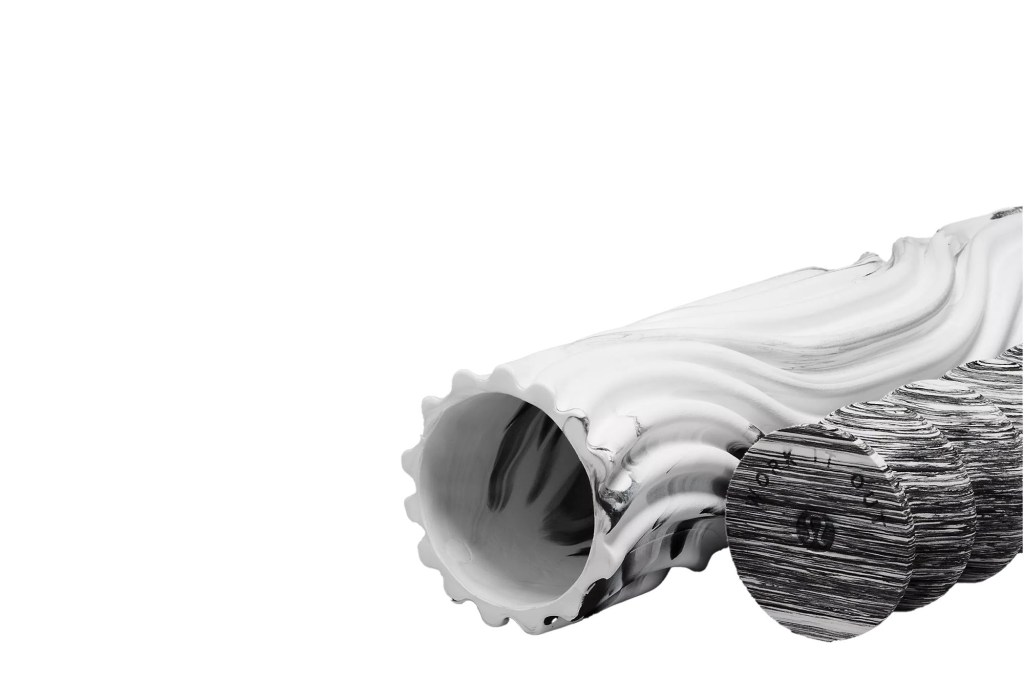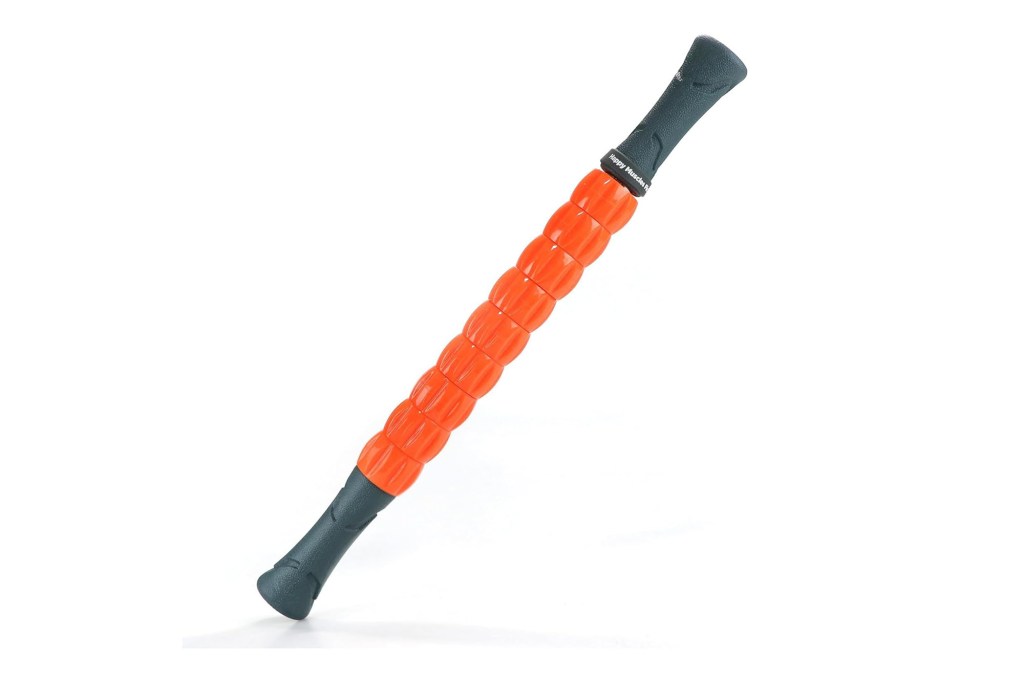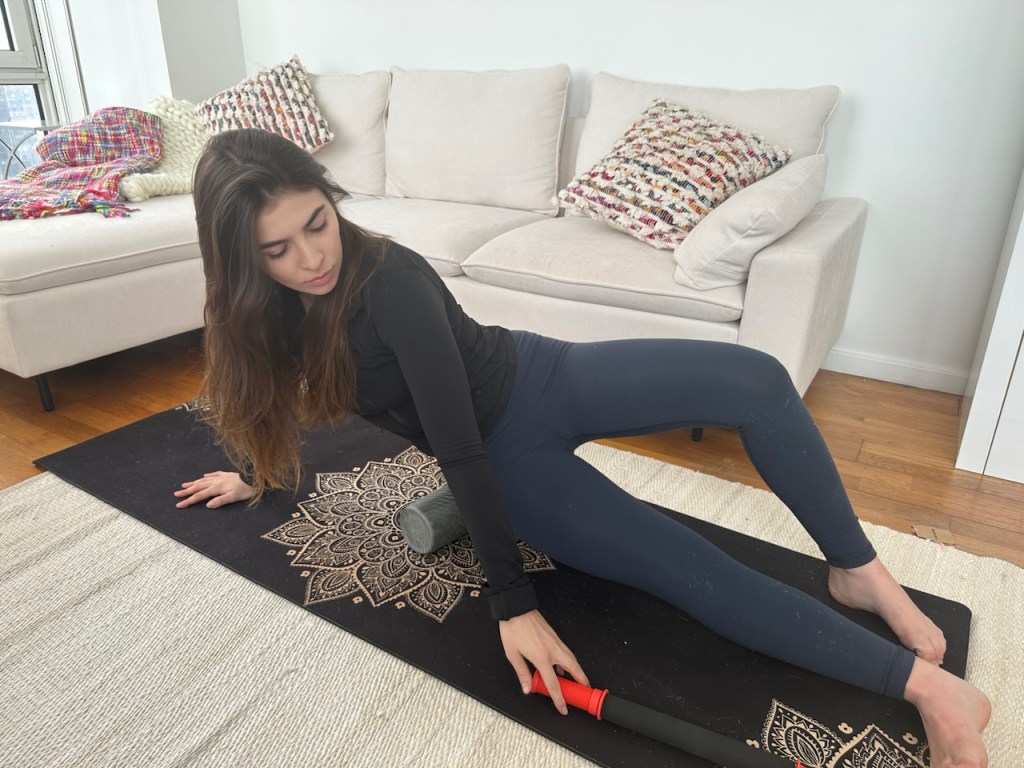As someone who enjoys the occasional sweaty gym session, I’m also quite accustomed to the post-workout comedown: inflammation, soreness, tight muscles, and potentially a few knots in the back or legs. It’s not nearly as exciting as a runner’s high.
Fortunately, there are some great post-workout recovery tools that I’ve found to help tremendously — foam rollers being one of the very best. Foam rollers come in various shapes and sizes, as well as a range of textures. Some have been designed to provide a lighter surface massage, and others are geared for deeper muscle relief. With the right instructions, you can also use foam rollers to stretch and increase flexibility.
In order to provide a comprehensive review of the best foam rollers, I’ve evaluated a few from top brands myself — like , , and even . I tested these rollers individually, the day after higher-impact workouts, in order to determine just how well they worked.
For some additional guidance on using foam rollers and tips from an expert, The Post consulted , a Tier 3 coach at Equinox Park Ave. Carroll has over 18 years of experience in martial arts, bodybuilding, and calisthenics. If you would like to learn more about using foam rollers as a recovery or workout tool, you can head directly to the expert recommendations section. Otherwise, read on for our top picks.
And, if you’re still hunting for more tools to add to your home gym, you may want to head to our roundups of the top fitness equipment and clothing, pressure-relieving massage guns, and best resistance bands per experts.
Shop our top picks in each category:

Pros:
- EVA-foam-wrapped
- Grid pattern with varying ridges for precise targeting
- Comes in many different colors
Cons:
- Some reviewers say it’s a tad short to use for a full-body release
Length: 13 inches
I was introduced to this roller by a physical therapist — and they were not messing around. This roller is definitely of higher quality than some others, and you can tell by the sturdiness of the foam. The hollow core allows deeper compression, which ultimately feels a lot like a sports massage. I will say that the multi-density grid can be powerful on sore muscles, but as soon as I was done using it I felt that my back had elongated and some of the tightness in my upper thighs was gone. It also comes in 11 colors, so there is one for everybody!

Pros:
- Two-in-one combination (separate rollers for back and legs/arms)
- Beautiful marble design
- Many reviewers say this roller provided instant relief
Cons:
- Some shoppers said it was a bit difficult to slide out the interior roller
- More expensive
Length: 20 inches
I will admit that $64 seems like money to spend on a foam tube, but this roller from lululemon really has exceeded my expectations. It’s essentially a two-for-one deal. The larger exterior roller is ideal for massaging arms and legs, while the smaller inner roller can be used to reduce tension in the back. Having the ability to switch back and forth is quite convenient, especially because I experience soreness in different areas on different days. Not to mention, the marbled design is also gorgeous — very yoga-class-ready.
Best vibrating:

Pros:
- Vibration therapy
- Wave texture
- QuietRoll Technology effectively mutes sound and reverberations
- Three different vibration settings
Cons:
- Smaller than some rollers — though easier to pinpoint specific areas
- More expensive
Length: 3.4-inches
Some athletes take advantage of the firmness and roundness of lacrosse balls to roll out some of their muscles, especially sore feet. The designers at Therabody have drawn on this concept to bring customers the innovative Wave Solo.
This small, but mighty vibrating ball delivers a deep massage to dampen pain and reduce tension. I’ve tested it out on my feet, a part of the body that surprisingly carries a lot of stress. By just applying a bit of weight, the ball delivered intense vibrations that I could feel shooting up most of my foot. After a couple of minutes of use, I felt like I could run a marathon, and that is Therabody technology in a nutshell — it’s both relaxing and energizing at the same time. With three vibration settings, you can also tailor the level of intensity to your desire. It’s worth the splurge, I promise.

Pros:
- Ideal length for rolling out back (not too long or short)
- Smooth design is a bit easier for lighter rolling sessions and still relives soreness
- High-quality, dense foam material
Cons:
- A flat surface may be less ideal for working out knots
Length: 15 inches
I have a pretty low pain tolerance, so I typically head for less invasive workouts and post-workout tools. In my experience, the smoother, flatter surface of this foam roller from Tiger Tail is ideal for those of us who are looking to relieve some soreness, without putting up with the deeper ridges of some more advanced rollers. Don’t get me wrong — this one still works fabulously. There are no bumps or grooves, and the even pressure feels great on a sore upper back. For someone who needs more of a grid system to work out knots, there may be a better roller out there, but this one will do for me!

Pros:
- Compact — ideal for traveling
- Some reviewers say it is softer than a regular foam roller
- Minor ridges for a slightly deeper massage
Cons:
- Shorter length may not be ideal for rolling out longer backs
Length: 12 inches
There are a couple of things I really love about this roller. The first is — it’s small enough to throw right into your gym back. At 12 inches, the length may not be ideal with people who have larger backs, but it still works perfectly for me. Out of all of the rollers I tested, this one is less stiff and has a bit more give to it. I’d say it’s a great roller to start with. I felt refreshed after just a couple minutes of rolling out my legs and back, and suspect that if I had spent even more time on specific muscle groups I could get an even better release out of it.

Pros:
- Very lightweight, easy to reposition
- Smooth surface, wipes clean easily
- Many reviewers agree that this roller provides quick pain relief
Cons:
- Some reviewers say this roller was harder than expected — a bit uncomfortable for some
Length: 12 – 26 inches
Amazon really makes just about everything these days, and they have not forgotten to throw some post-workout tools into the mix. The Amazon Basics foam roller is just that — a basic. It’s an uncomplicated, smooth roller made with polypropylene. I really appreciate how lightweight this roller is, and the fact that it comes in various lengths, but I will say that it’s a bit firmer than others. Prepare to grunt a bit while working through sensitive spots. The results will be worth it — I felt like a new person after standing up. For just over $11, the results are worth it.

Pros:
- Segmented spindles
- Glides easily over muscles and clothing
- Saves thumbs, fingers, and hands from fatigue
Cons:
- Best for minor aches and soreness
Length: 18 inches
I never thought to use a handheld roller before this one, but I was pleasantly surprised to find out just how well it worked on my sore calves. It may provide less of relief than some of the bigger rollers, but the cylindrical design allows you to have much more control over how much pressure you apply and where you apply it. Choosing the best foam roller really comes down to personal preference, but I would say that anyone who hasn’t tried the handheld version should give it a shot.
How we tested

In order to evaluate the foam rollers, I decided it would be best to work out the day before rolling out. I tried to test each roller individually, while my muscles were still slightly sore, to determine whether the roller helped alleviate any of the soreness. I used the rollers primarily on the sides of my thighs as well as my upper back, per Carroll’s advice. Foam rolling isn’t supposed to feel great in the moment, but it should not be uncomfortable either. My review was largely based on how I felt while rolling, as well as whether I noticed any change in soreness or flexibility after rolling out my muscles.
Expert Recommendations
How do foam rollers work?
Using a foam roller activates the process of self-myofascial release (SMR), which is to compress and release muscle fibers and fascia which may have become bundled or tight within the muscle.
“Applying the pressure with a rollers helps flatten bundled fibers and promote increased flexibility, as well as reduce post-exercise muscle soreness,” explained Carroll.
What are the different types of foam rollers?
There are several types you can use, according to Carroll: “Normal rollers are just a standard tube covered in foam which you will roll your muscles over to apply pressure and warm the tissue.”
For someone looking for a deeper muscle release, Carroll has recommended going with a spiked or stiff roller: “There are spiked rollers which have points to penetrate the muscle deeper, and stiff rollers without any foam, such a tube of PVC pipe, which can offer a more intense massage than the standard roller.”
Vibrating models are also a popular option.”Vibrating models can further increase the effectiveness of a roller by increasing blood flow and building heat within the tissue,” explained Carroll. “It’s like adding a massage gun into the process of rolling!”
What are the physical benefits of using a foam roller?
“They are a great tool to prepare the muscles for weightlifting, stretching, or athletics. Pressure delivered from the roller generates heat and blood flow within the muscle and releases stiff fibers which prepares the body to move and the muscle to activate comfortably,” said Carroll. He added that rolling can also temporarily increase flexibility, which is a great way to prep for stretching or a yoga class.
Where can you use a foam roller?
“You can generally use a foam roller anywhere on the body, however the most common and effective muscle group would be the legs,” said Carroll. He emphasized that the legs are a huge muscle group and the roller is effective at hitting the glutes, hamstrings, quads, and claves.
“You can still use the roller elsewhere of course, particularly I also like to hit my upper back, real delts, traps, lats,” noted Carroll. “I would be very cautious about rolling the lower back if you aren’t familiar with how to target it safely without applying too much tension on the spine.”
Where should you not use a foam roller?
Caroll has stressed that a roller should never be used over joints or on top of bones: “This can be very painful and also place you at a high risk of injury. Rollers are meant for soft tissue and muscles. When rolling a muscle you should also be relaxed, don’t flex or tense the muscle being worked, proceed slowly and methodically.”
How long should you roll?
Caroll has recommended spending about a minute per muscle, “anything longer is unnecessary. Assuming you want to roll out your whole body it shouldn’t take you longer than five minutes.”
How do you use a roller for a workout?
If using a roller to exercise, Carrol suggested starting at the beginning of a workout. “There are several ways you can use a roller for non-SMR purposes, such as a ‘thread the needle’ adductor stretch, or a thoracic spine extension to mobilize the upper back, especially after a long day at the desk.”








